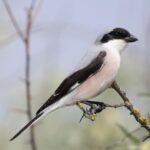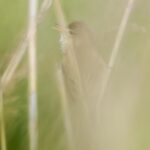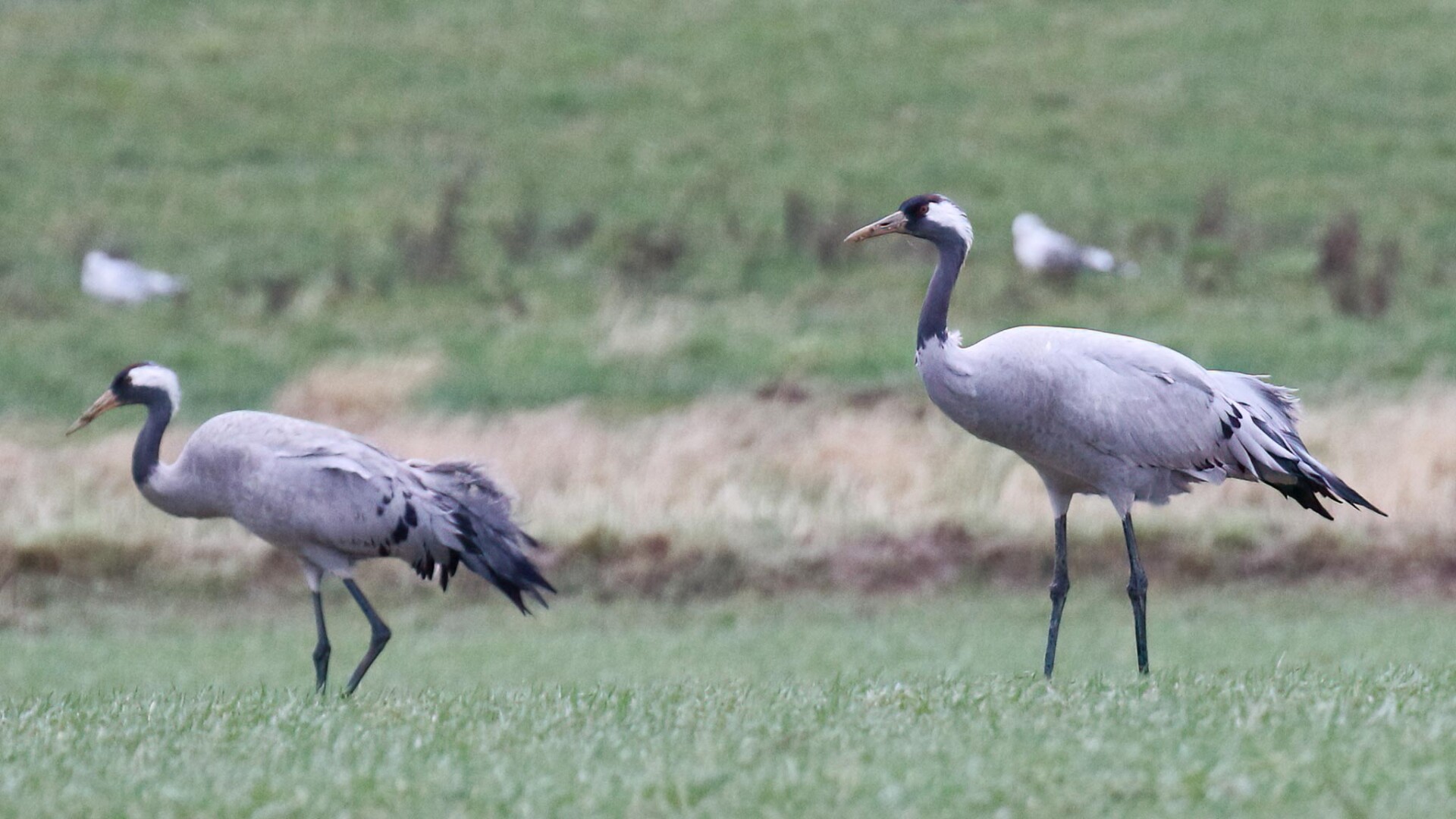Day 1 of a three day Autumn Tour today, and we headed across to the Broads. It was bright with sunny intervals and warm, although we drove into heavy showers on our way back in the afternoon.
Our first destination was Potter Heigham. As we walked down the track from the car park several House Martins were hawking around the trees opposite and we could hear Greenfinches calling.
Across the main road, we scanned the grazing marshes as we walked along. A Kestrel was hovering at the back and a Common Buzzard flew in and landed on post briefly. A Grey Heron flew across and landed in one of the ditches. A big flock of Egyptian Geese were sleeping in the cattle field between the track and the river. We could see a couple of Lapwings on the grazing marsh and our first Marsh Harrier flew across the track ahead of us.
There were lots of dragonflies out in the sunshine around the reedy ditches – Common Darters, Migrants Hawkers and a couple of Brown Hawkers – and a good number of Red Admiral butterflies.
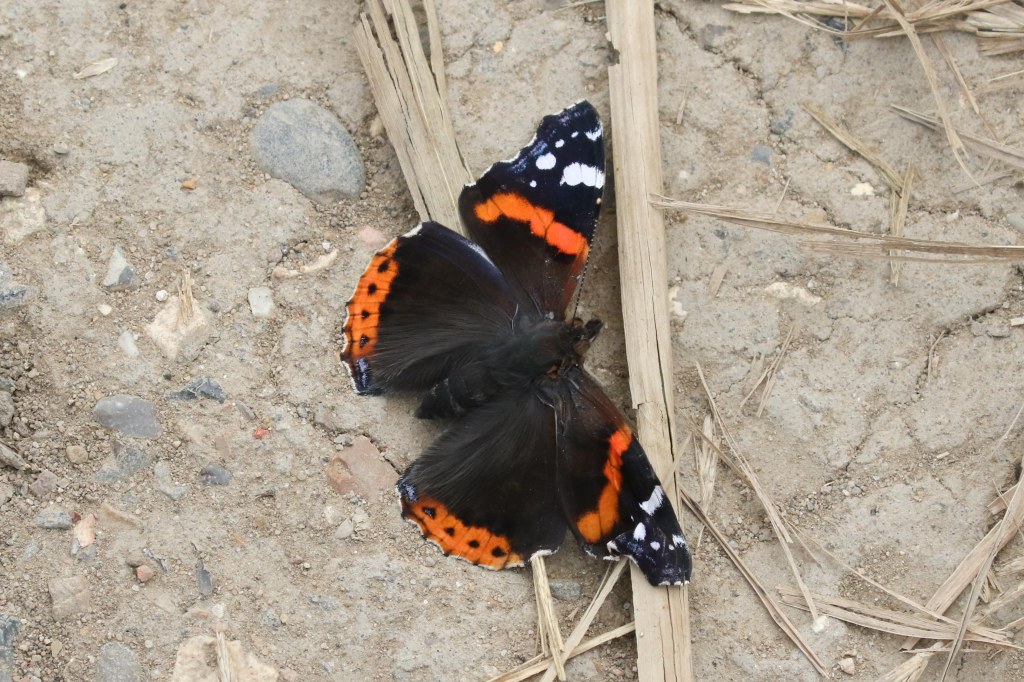
When we got to the first pool, we found a couple of gaps in the reeds to look through. There were lots of geese on the mud beyond the water – mostly Greylags, plus a gaggle of Canada Geese and few more Egyptian Geese. A group of Wigeon were gathered on the near end of geese, with a few Shoveler and a single Tufted Duck out on the water.
A couple of Ruff were in among the geese and we found some more waders tucked down in the near corner on the mud – several Black-tailed Godwits and a single Common Snipe. A small group of Little Egrets were on the bank a bit further back.
We continued on down the track to the corner and took the path up onto the bank. Looking across to the pool opposite, we could see three Greenshanks running around after each other, calling, before they flew off. There were a couple more Common Snipe here and we picked up a single Green Sandpiper over on the far side. We could see a few Black-tailed Godwits on the island, but they were mostly out of view through the reeds from where we were standing.
At this point, we received a message via the news services that the Long-billed Dowitcher which has been here for several days was still present. A few people had gone on ahead of us, so we presumed they had found it and walked on to find them. They were looking out over the next pool, but knew nothing about it! We stopped to look here too, adding another seven Common Snipe to the tally.
We picked up the three Spoonbills which had also been reported as present, distantly out in the middle. We decided to have a look on the pools round on the other side, where we could get a better view of the Spoonbills and see if the dowitcher was over there. On the way round, a Ruddy Darter was in the grass by the path.
Scanning the pools from the river bank, there were lots more Greylags on here. There were more waders too – lots of Ruff and several Common Snipe in the muddy channel in the far corner. We kept adjusting our position to get a different angle over the reeds and see different parts of the pools. We picked up a single Dunlin on the far bank.
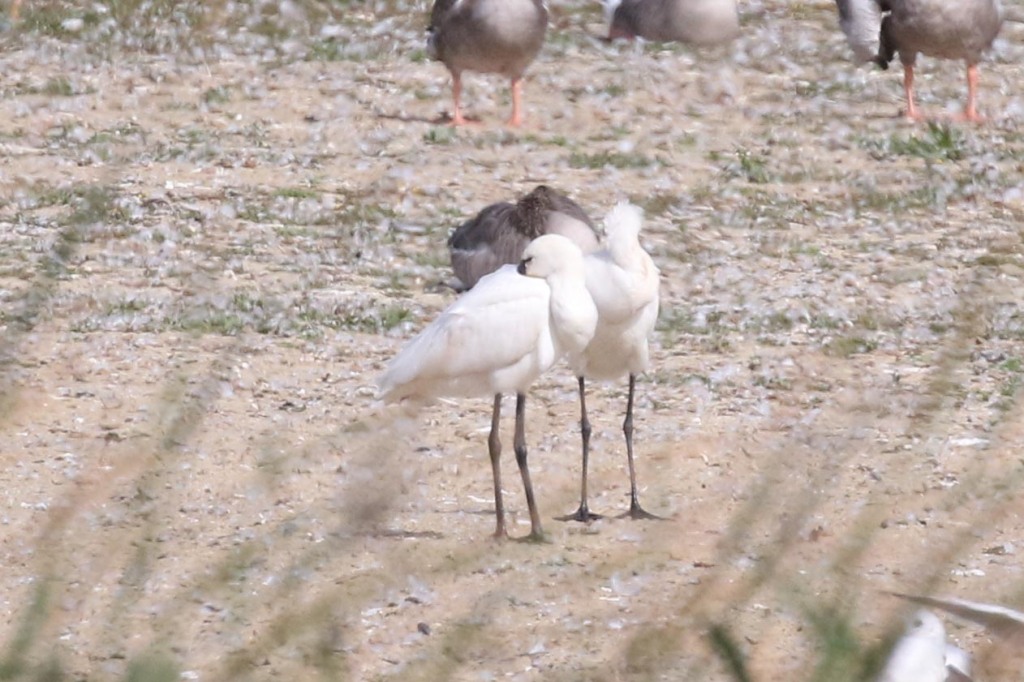
We eventually found an angle from where we could get a better view of the three Spoonbills. They were mostly asleep, but woke up occasionally to flash their yellow-tipped black spoon-shaped bills.
A smart male Marsh Harrier flew in over the pools past us and across the river behind.
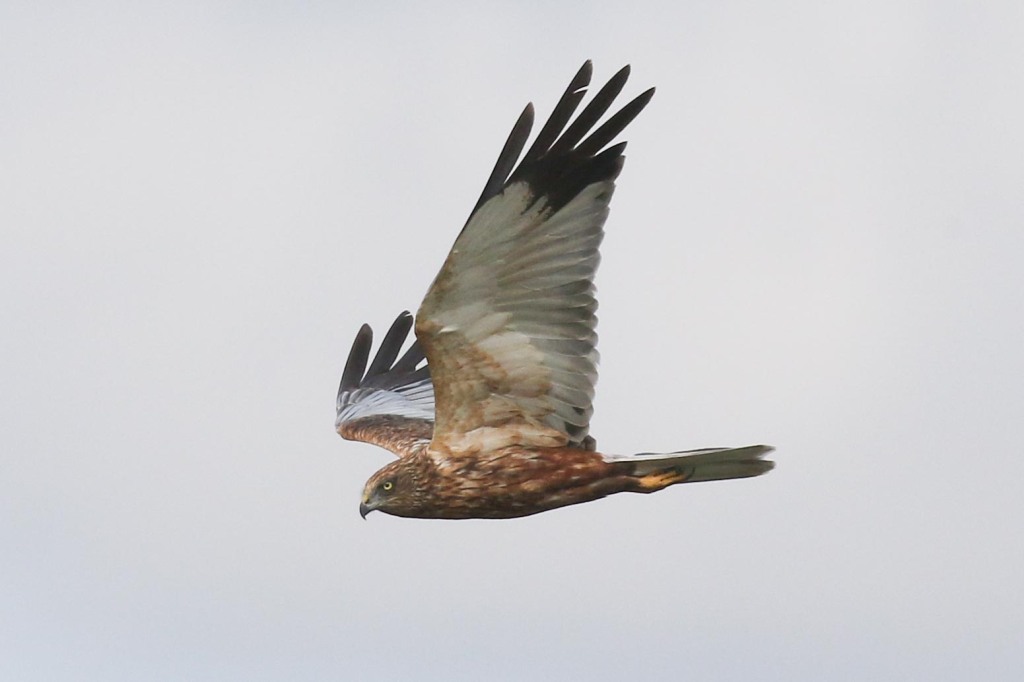
We received a message from two of the people we had spoken to earlier that they could see a Garganey on the pool with a couple of Teal. We couldn’t find it initially from where we were standing, but eventually located it from a little further up. There were two Garganey now, with the two Teal. We could see the distinctive pale spot at the base of their bills through the scope. A closer Greenshank on the next pool flew off just as we got the scopes on it.
We had intended to walk back round the way we had come, to have another go at finding the dowitcher, but the group was tired after the walk round here now and wanting to head back for lunch. It was a shorter walk back along the river bank, but quieter bird-wise. We had just got back to the car park when we received a message from the others to say they had just relocated the dowitcher asleep on their way back. Too late!
We drove round to Winterton and found a spot to eat lunch in the back of the car park, overlooking the sea. There were several gulls out on the water. An adult Mediterranean Gull and a Lesser Black-backed Gull flew past. Three Sandwich Terns were fishing just off the sandbar, until they were chased past us by a juvenile Herring Gull. There were several Cormorants and Grey Seals offshore too, but when we spotted a small shape bobbing on the water just off the concrete blocks it turned out to be a Guillemot, which swam slowly past us just off the beach. We picked up a distant Gannet flying past too.
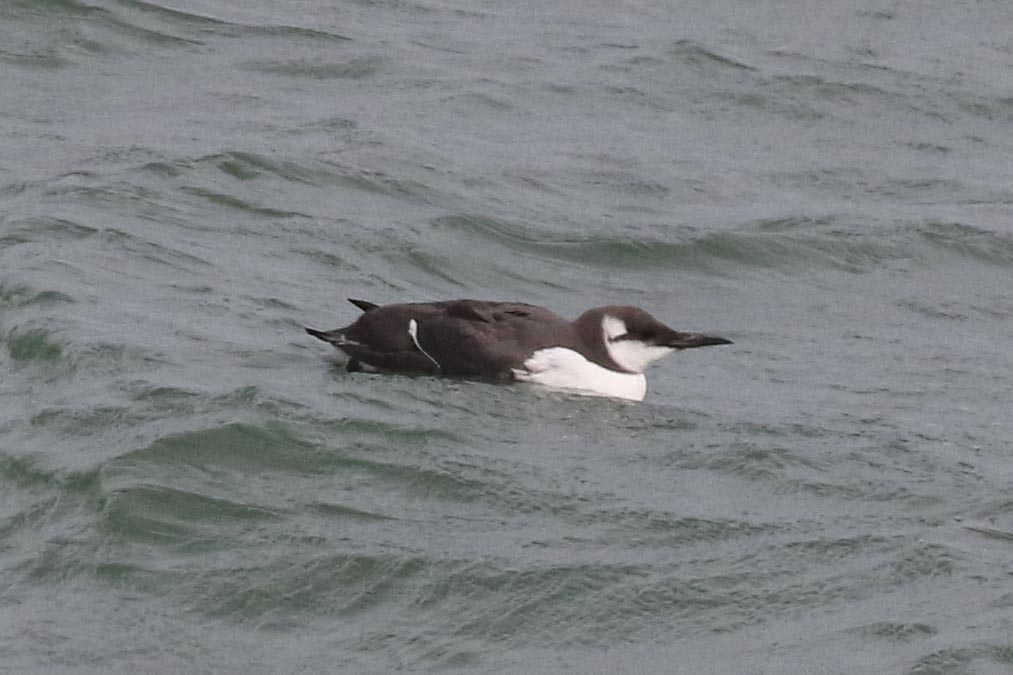
After lunch, we headed off for a walk into the dunes. There weren’t many birds at first. We could see one or two Marsh Harriers over the bushes inland and a couple of Kestrels. But we did see a good selection of butterflies – lots of Red Admirals, but it was particularly nice to see several Graylings here, and a late tatty Common Blue was an addition to the list.
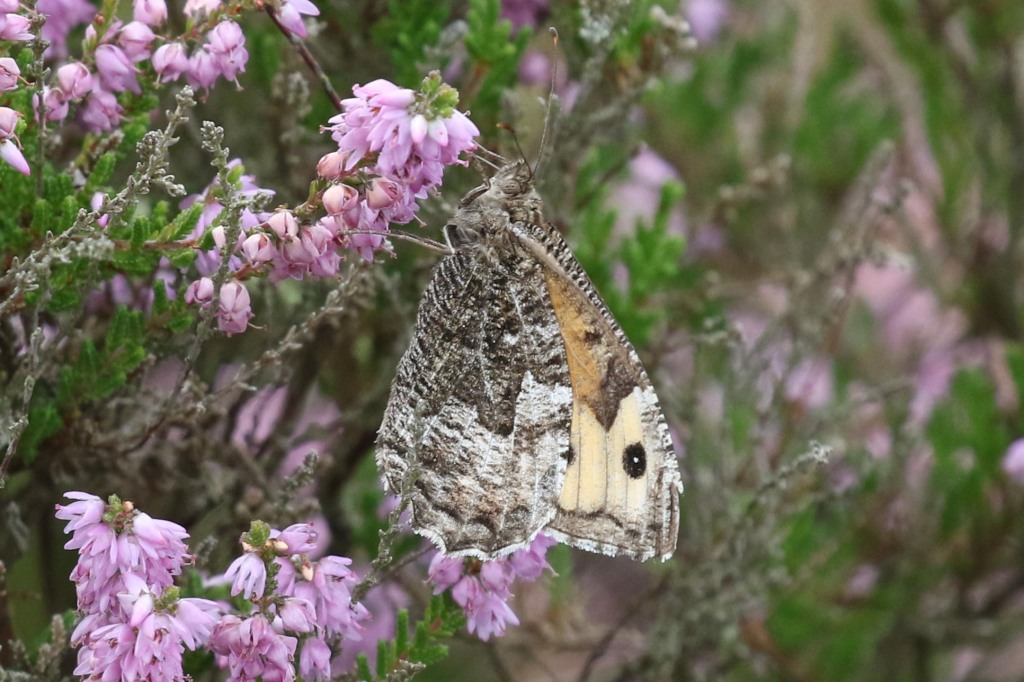
We were already armed with some up to date information from one of the regulars, and we bumped into someone else who confirmed we were heading in the right direction. A little further up, along the fence line, we found a small group of Stonechats. Scanning across, we spotted a Whinchat with them, paler peachy orange on the breast with a bright pale supercilium. The chats were constantly on the move, and so hard to count, but eventually we managed to see all three Whinchats together that we had been told were present. A lot of migrants move through quickly in this clear, sunny weather, so it was nice to catch up with some while we could.
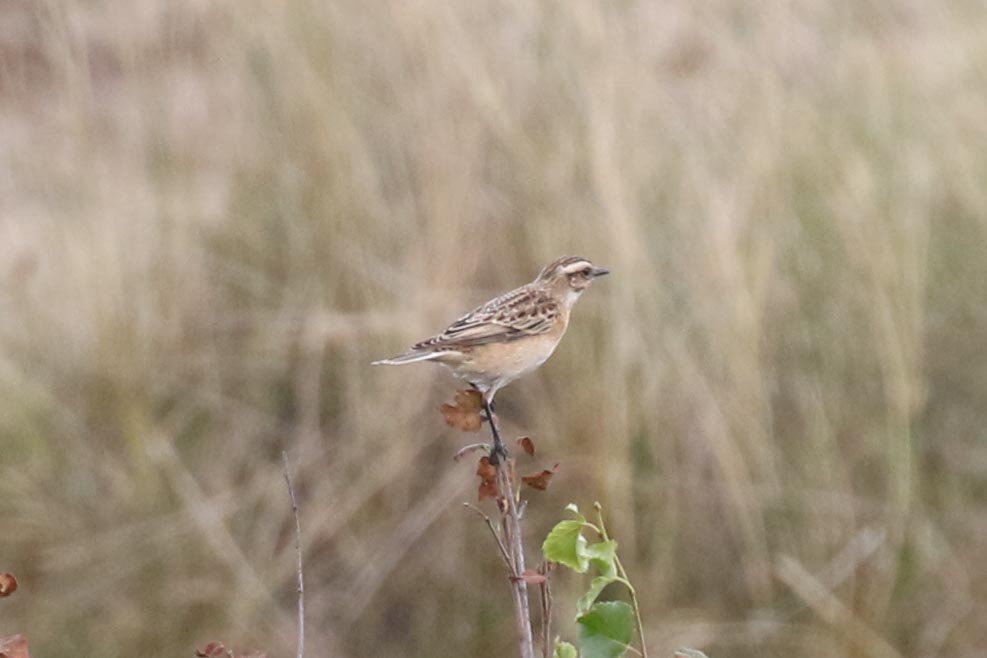
There were a few warblers in the bushes here too, and we had some nice views of a Common Whitethroat which seemed to be following the chats around.
Beyond the chats, we spotted a Wheatear in the dunes so we walked across for a closer look. It was joined by a second and they flicked off ahead of us, flashing their white rumps.
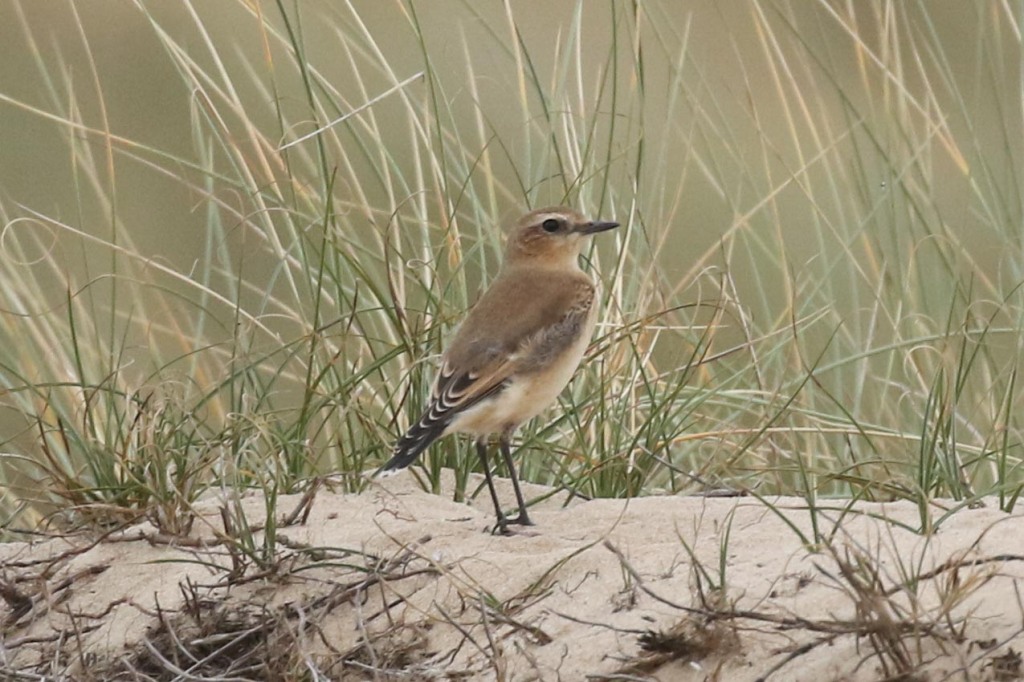
It was nice standing in the dunes watching the Whinchats and Wheatears. We figured that was as much walking as we would be able to manage today, so we decided to head back slowly to the car park. When we got back, we had another look at the sea. The tide had gone out and there was much more sand now. More Sandwich Terns had gathered on the beach with the gulls, several Mediterranean Gulls and Common Gulls as well as the Herring and Lesser Black-backed Gulls.
It was a long drive back, so we decided it was time to call it a day and head off now. We would have an early start tomorrow too.
